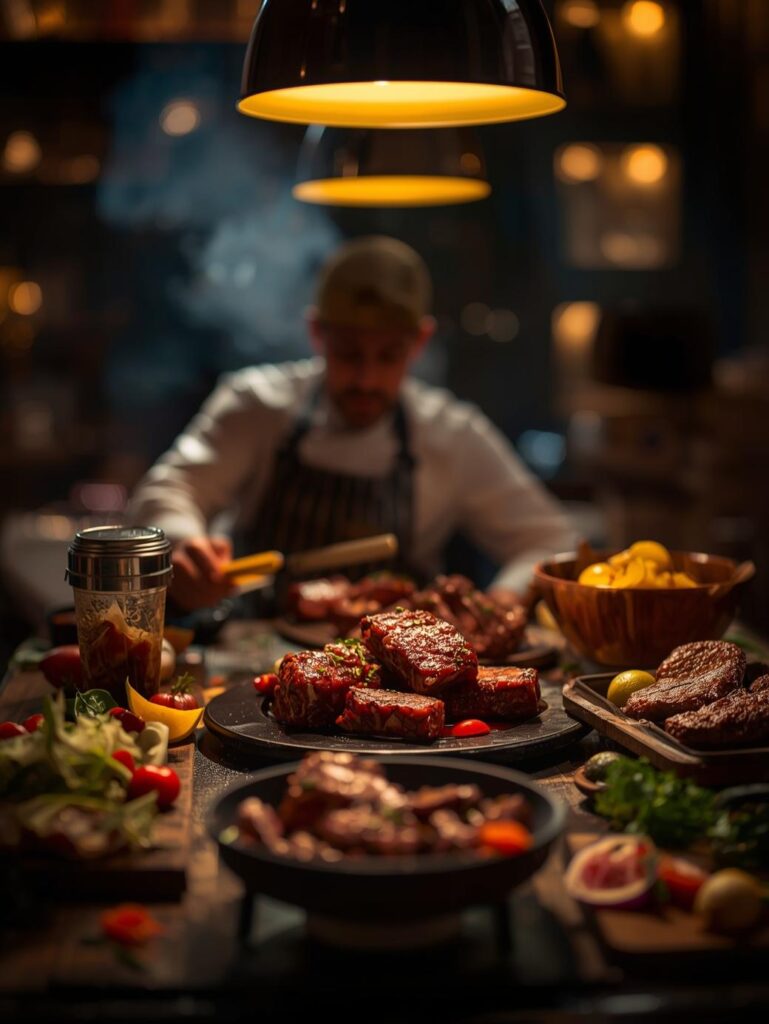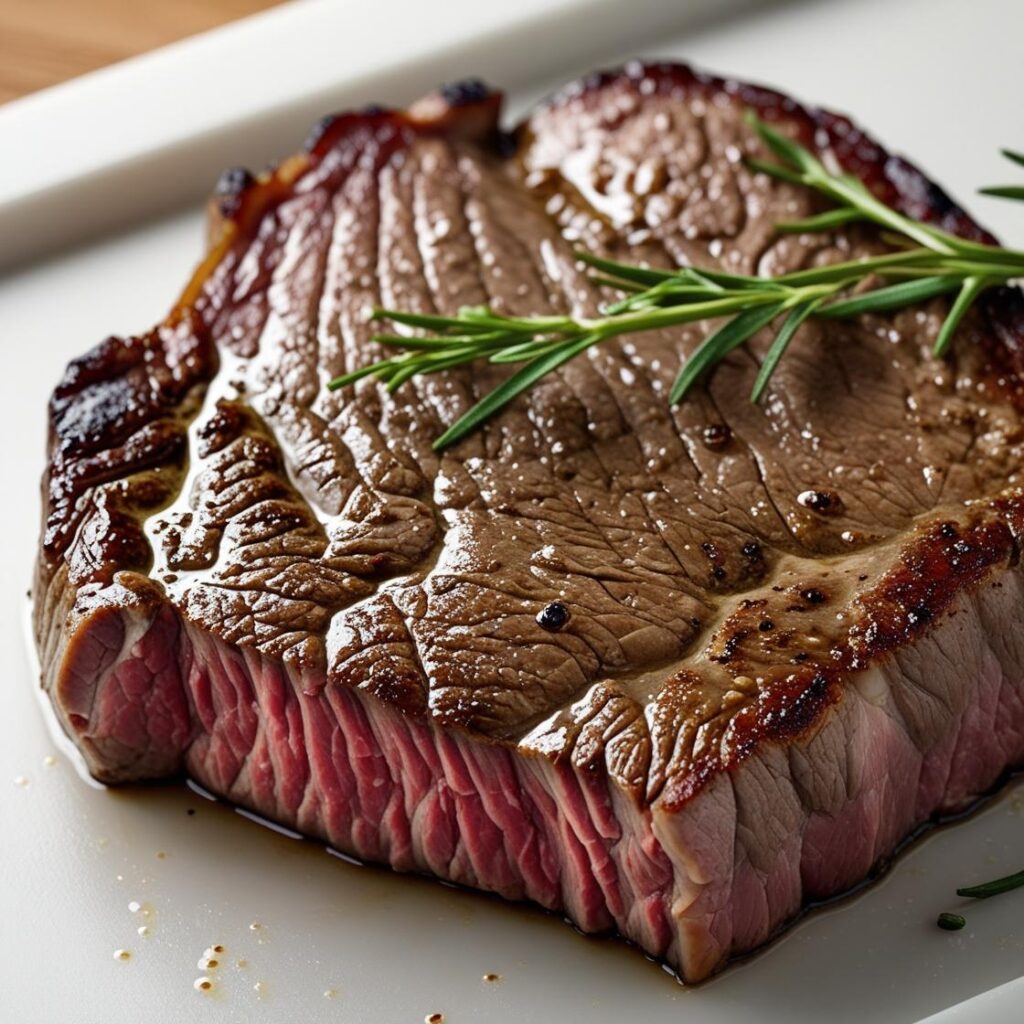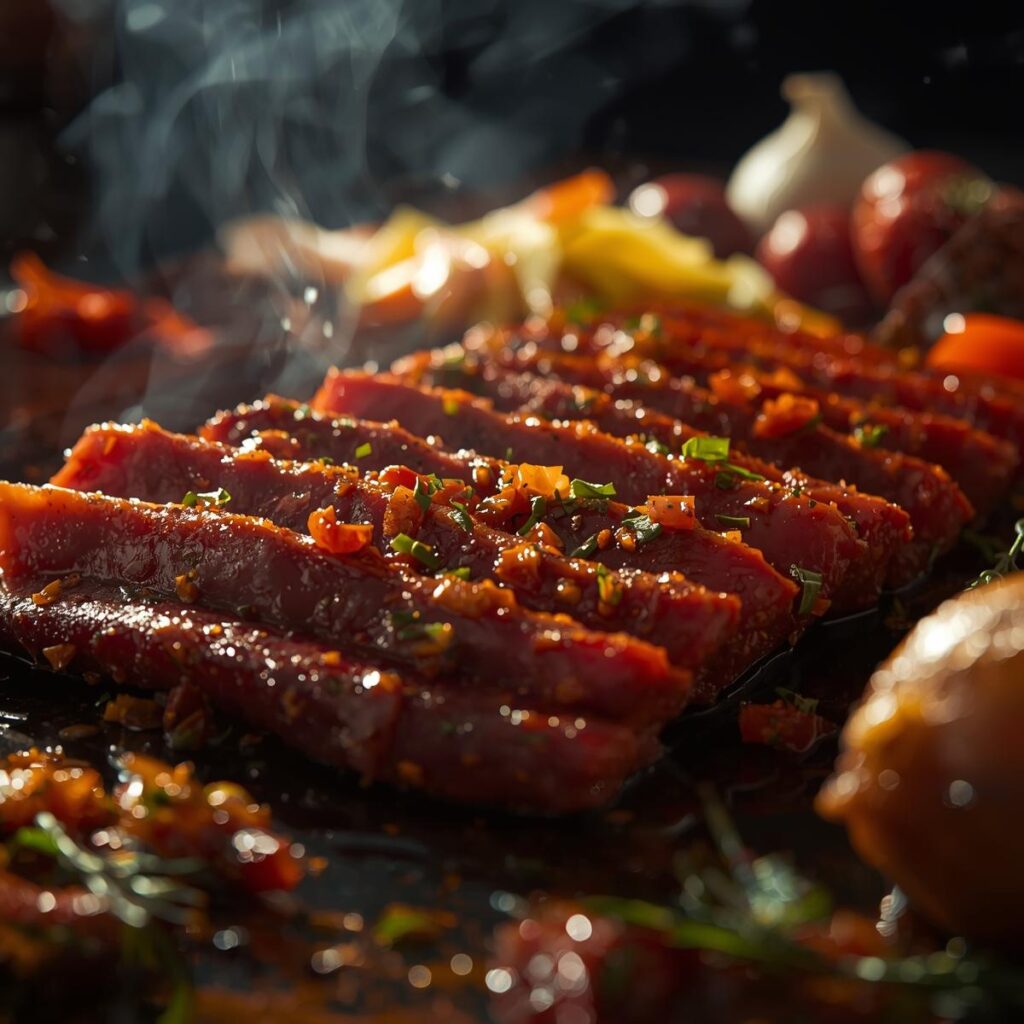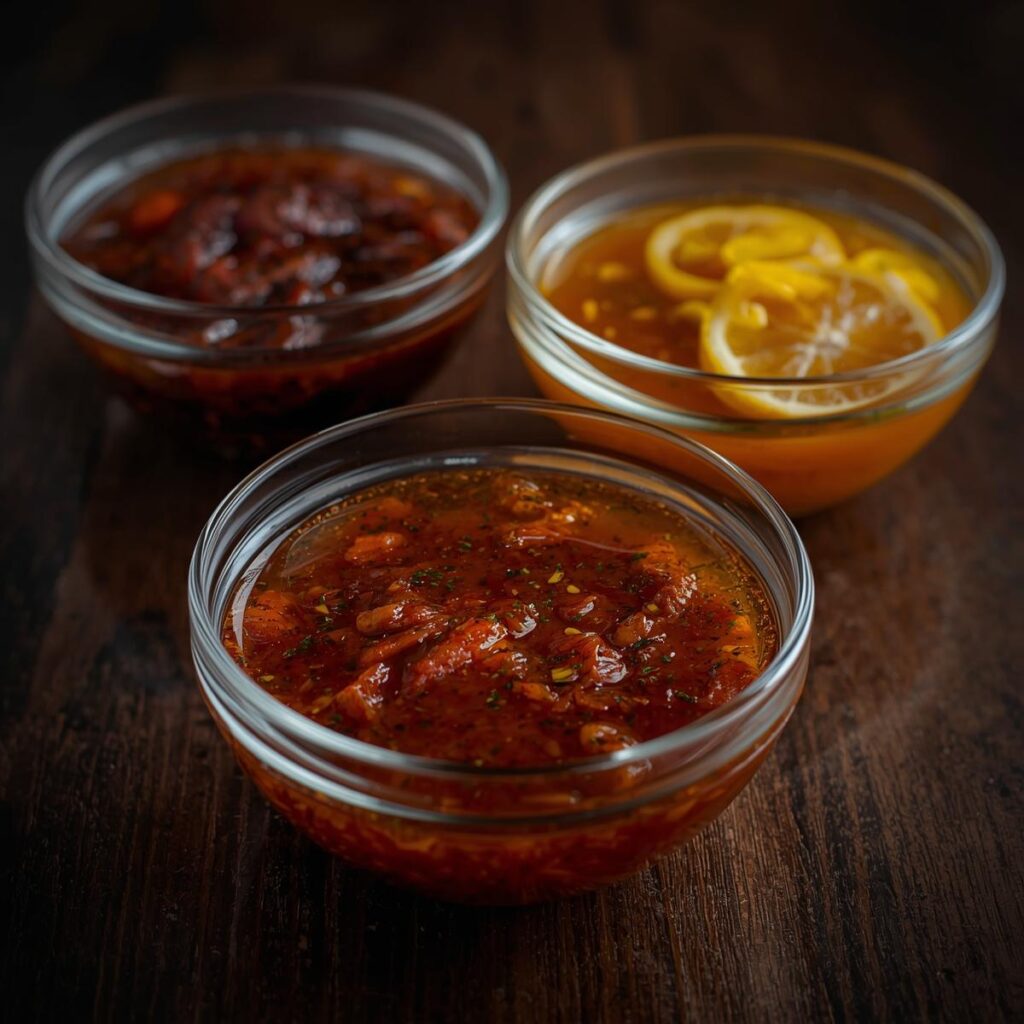Table of Contents Hide ContentsWeekend Chef Secrets: 5 Techniques That Transform Basic Meats
There’s a difference between simply cooking a piece of meat and truly mastering it. That incredible steak you had at a restaurant, the impossibly tender pot roast from a friend—these aren’t just the result of a good recipe. They are the product of specific, professional techniques. The good news? You don’t need a culinary degree to learn them. With a little knowledge, you can use these weekend chef secrets to elevate your home cooking and transform even the most basic, affordable cuts into something extraordinary.
These five simple but powerful techniques are the keys to unlocking next-level flavor and texture. By understanding the “why” behind each one, you can start cooking like a pro and make your next weekend cooking session unforgettable.
Secret #1: The Dry Brine – Unlocking a Juicy Interior
Many home cooks think a marinade is the best way to tenderize and flavor meat. While marinades are great, they don’t hold a candle to the power of a dry brine. This is one of the most fundamental chef secrets for cooking perfect meat.
What It Is & Why It Works
A dry brine is simply applying a generous amount of coarse salt to the surface of the meat and letting it sit in the refrigerator for an extended period, uncovered. The salt draws out moisture, which then dissolves the salt to create a concentrated brine. This brine is then reabsorbed into the meat, deeply seasoning it from the inside out. The salt also begins to break down muscle proteins, which tenderizes the meat and allows it to retain more moisture during cooking. This is a game-changer for lean cuts like pork chops or steak, preventing them from drying out.
How to Apply It: The Perfect Pork Chop
- Prep: Pat a thick-cut pork chop completely dry with a paper towel.
- Season: Liberally coat all sides of the pork chop with coarse kosher salt. You should be able to see a visible layer of salt on the surface.
- Brine: Place the pork chop on a wire rack on a plate and refrigerate, uncovered, for at least 12 hours, or up to 24 hours. The open air helps dry the surface, which is crucial for a great sear.
- Cook: Just before cooking, pat the pork chop dry again, and then proceed with your preferred cooking method. The salt will have been absorbed, leaving you with a perfectly seasoned, juicy interior.
Secret #2: The Reverse Sear – The Key to a Perfect Steak
For years, the standard advice was to sear a steak first, then finish it in the oven. But for a thick, beautiful steak, that method often results in a gray, overcooked ring around a raw center. The weekend chef secrets to a perfect steak lie in the reverse sear.
What It Is & Why It Works
The reverse sear technique involves cooking a steak slowly at a low temperature first, then finishing it with a quick, high-heat sear at the end. This is a technique that can easily be used on a grill or in an oven. The slow cook brings the entire steak to an even temperature, and the final sear creates a deep, delicious crust without overcooking the center. It’s the key to a next-level cooking experience.
How to Apply It: The Perfect Sirloin Steak
- Slow Cook: Set your oven or grill to a low, indirect temperature (around 250°F). Place the steak on a wire rack and cook until the internal temperature reaches about 115°F for medium-rare. A remote digital thermometer is essential for this step.
- Rest: Remove the steak and let it rest for 10-15 minutes. This allows the heat to equalize throughout the meat.
- Sear: Crank up your skillet or grill to its highest heat. Sear the steak for 60-90 seconds per side, until a deep, dark crust has formed. The result is a steak that is perfectly cooked from edge to edge. This is a key part of our Weekend Grilling Guide.
- Suggested Image Alt Text: A perfectly reverse-seared sirloin steak, a great example of weekend chef secrets in action.
Secret #3: The Low & Slow Cook – Turning Tough Cuts Tender
Not all cuts of meat are created equal. Tough, collagen-rich cuts like chuck roast, pork shoulder, and oxtail can be dry and chewy if cooked quickly. But with the right meat cooking techniques, they become meltingly tender.
What It Is & Why It Works
A “low and slow” cook involves cooking meat at a low temperature for a long period of time. This extended cook gives the tough collagen in the meat time to break down into gelatin. This process is what gives slow-cooked meats their signature fall-apart, tender texture. It’s a staple of BBQ and a fundamental smoking guide.
How to Apply It: The Perfect Chuck Roast
- Sear: Start by searing all sides of the chuck roast in a hot pan. This creates a deep, flavorful crust, which is essential for a great final product.
- Braise: Place the seared roast in a Dutch oven or slow cooker with some liquid (beef broth, wine, etc.) and aromatics like onions, carrots, and herbs.
- Cook: Braise in an oven at 300°F for 3-4 hours, or in a slow cooker on low for 8 hours. The low, moist heat breaks down the tough muscle fibers.
- The Result: The result is a pot roast so tender it can be shredded with a fork, a perfect example of how to transform basic meats. This is also a key element of any successful Weekend Meat Prep routine.
Secret #4: The Maillard Reaction – The Secret to Deep Flavor
Have you ever wondered why a seared steak or a roasted chicken is so much more flavorful than a boiled piece of meat? The answer is the Maillard reaction. This is one of the most important cooking secrets you can learn.
What It Is & Why It Works
The Maillard reaction is a chemical process that occurs when amino acids and reducing sugars react with heat. It’s what gives seared meat, toasted bread, and roasted coffee their rich, complex flavors and beautiful brown crust. It doesn’t just make food look good; it creates hundreds of new flavor compounds.
How to Apply It: The Perfect Sear
- Pat It Dry: To achieve a good sear, the surface of the meat must be completely dry. Moisture on the surface will create steam, which cools the surface and prevents the Maillard reaction from occurring.
- High Heat: Get your pan or grill as hot as possible. A hot cast-iron skillet is perfect for this.
- Leave It Alone: Once the meat is on the hot surface, do not move it. Let it cook for several minutes until it develops a deep, brown crust. This is one of the most important pro cooking tips.
- Suggested Image Alt Text: A sizzling piece of meat in a cast-iron skillet, a perfect display of the Maillard reaction and a key cooking secret.
Secret #5: The Long Rest – The Final Step to Juiciness
This is the easiest but most often skipped of all the weekend chef secrets. When you take a piece of meat off the heat, the juices are all concentrated in the center. If you cut into it immediately, all of that precious moisture will spill out onto your cutting board.
What It Is & Why It Works
Resting the meat allows the temperature to equalize and gives the muscle fibers a chance to relax and reabsorb all the juices. This simple act ensures that when you slice into your perfectly cooked steak or roast, the juices stay where they belong: in the meat.
How to Apply It: Rest Every Single Time
- Remove from Heat: When your meat reaches its target internal temperature, remove it from the heat source.
- Tent with Foil: Place the meat on a cutting board and loosely tent it with aluminum foil. Do not wrap it tightly, as this will trap steam and make the crust soggy.
- The Wait: Let the meat rest for at least 10 minutes for steaks and up to 30-45 minutes for large roasts. This is a non-negotiable step for any successful cooking like a pro outcome. You can learn more about this in our Saturday Grill Session.
| Weekend Chef Secret | Technique | Best for… |
| The Dry Brine | Salting and refrigerating meat overnight. | Pork chops, steak, chicken. |
| The Reverse Sear | Slow cook, then high-heat sear. | Thick steaks, roasts. |
| The Low & Slow | Cook at a low temp for a long time. | Chuck roast, pork shoulder, brisket. |
| The Maillard Reaction | High-heat searing for a brown crust. | All meats. |
| The Long Rest | Letting cooked meat sit before cutting. | All meats. |
FAQ: WEEKEND CHEF SECRETS
1. Do I need any special tools for these techniques?
The most important tool is a reliable instant-read or remote digital meat thermometer. It takes all the guesswork out of cooking and is essential for techniques like reverse searing and low & slow cooking.
2. Can I dry brine frozen meat?
You should always thaw your meat completely before dry brining. The salt will not be able to penetrate the meat properly if it is frozen.
3. Can I apply the Maillard reaction technique to any kind of meat?
Yes. The Maillard reaction occurs on the surface of all meats when exposed to high, dry heat. This is why searing is so important, whether you are cooking steak, chicken, or pork.
4. How long can I dry brine a piece of meat?
For smaller cuts like steak or pork chops, 12 to 24 hours is perfect. For a large roast or a brisket, you can dry brine it for up to 36 hours.
5. What if I don’t have a grill for reverse searing?
You can easily reverse sear a steak in your oven and a cast-iron skillet. Set your oven to 250°F for the slow cook and then finish the sear in a hot, oiled skillet on your stovetop.
6. Are these pro cooking tips applicable to any meat?
Yes, these techniques are universal. While we used specific examples, the principles of proper seasoning, searing, and resting apply to all types of meat, from chicken to fish to pork.
7. What’s the difference between a marinade and a dry brine?
A marinade is a wet solution that adds flavor but has a hard time penetrating the meat to truly season it. A dry brine uses salt to draw out and reabsorb the meat’s own moisture, resulting in a much deeper, more effective seasoning.
Conclusion: From Good to Great Cooking
These weekend chef secrets are not just for professionals. They are simple, accessible techniques that can fundamentally change the way you cook. By understanding the principles of dry brining, reverse searing, low and slow cooking, the Maillard reaction, and the long rest, you can transform basic cuts of meat into truly extraordinary meals. So, the next time you’re in the kitchen, remember these five techniques and get ready to impress everyone with your newfound skills.






